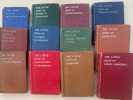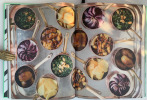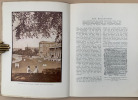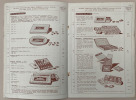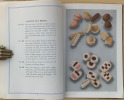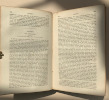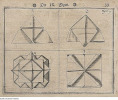ANON.
THE Lady's Companion:
VOLUME 1. CONTAINING Upwards of Three Thousand different Receipts:
in every Kind of COOKERY: AND Those the best and most fashionable; BEING Four Times the Quantity of any Book of this Sort. 1. Making near two Hundred different Sorts of Soops, Pottages, Broth, Sauces, Cullies, &c. after the French, Italian, Dutch, and English Way; also making Cake Soop for the Pocket. 11. Dressing Flesh, Fish and Fowl; this last Illustrated with Cuts, shewing how every Fowl is to be truss'd. 111. Directions for making Ragoos and Fricaseys. 1V. Directions for Dressing all Manner of Kitchen Garden Stuff, &c. V. Making two Hundred different Sorts of Puddings, Florendines, Tanzeys, &c. which are four Times the Number to be met (2 long perpendicular lines) with any other Book of this Kind. V1. The whole Art of Pastry, in [n aking - sic] upwards of two Hundred Pies, (with the Shapes of them engraven on Copper-Plates) Tarts, Pasties. Custards, Cheese-Cakes, Yorkshire Muffins, &c. V11. Receipts for all Manner of [Pick ing - sic] Potting, collaring, &c. V111. For Preserving, making Creams, Jellies, and all Manner of Confectionary, with particular Receipts for making Orgeat and Blanc Manger. 1X. Rules amd Directions for setting out [D nners, - sic] Suppers, and grand Entertainments. To which is added, Bills of Fare for every Month in the Year. ALSO Directions for Brewing Beers, Ales, &c. making all Sorts of English Wines, Cyder, Mum, Metheglin, Vinegar, Verjuice, Catchup, &c. WITH The receipts of Mrs Stephens for the Stone; Dr. Mead for the Bite of a Mad Dog; the recipe, sent from Ireland, for the Gout; Sir Hans Sloane's Receipt for Sore Eyes; and the receipt for making Tar Water.
(1 long horizontal line) The SIXTH EDITION with Large Additions. (1 long horizontal line) VOL.1. (1 long horizontal line) LONDON: Printed for J. HODGES, on London-Bridge; and R. BALDWIN, at the Rose, in Pater-noster Row. 1753.
VOLUME 11. is the Fifth Edition. Title page same as previous, except the three typos on the sixth edition are not evident here.
VOLUME 1. 179 x 113mm. 1 new fep. 1 original with inscription - Liz. Booker. Book AD 1757. [1] Frontispiece. Title Page with ink inscription on verso tipped in, with a warning "not to steal this book". (1)2-413. [1] Sixteen pages of Index to the first volume. 1fep. With seven pages of illustrations of trussing. Also nine pages of Bills of Fare. Text block fine. Frontispiece, tittle page somewhat browned and stained with no loss.
VOLUME 11. 179 x 115mm. 1 new fep. 1 original fep. Title Page with ink recipe on verso tipped in for 'French Rowles'. (1)2-422. Eight pages of Index to the second volume. 2fep. With eight pages of ornate pie shapes. Text block nice and clean with the title page slightly age browned. Both volumes bound in full dark brown calf with both spines rather sunned. Boards with elaborate blind tooling and edged with thin gilt lines. The spines with raised bands and blind and gilt tooling. With red labels, gilt text and small round breen labels for volume numbers.
-
Although the author is unknown and has produced a very large quantity of text, filling two thick volumes, the question arises; why not put a name to what is actually an impressive cookery book.? It is hard to imagine an independent publisher or even a production this size issued by a publishing quango, being profitable. The Title page proclaims boldly, that it is "Four Times the Quantity of any Book of the Sort". With near 200 soups alone, Including The Cook and Housewife's Calendar, or monthly list of things in season from January to December; Proper articles to cover the table every month ; Specimen of a Housekeepers Book with year-end statement; Marketing tables from one penny three farthings to three pence; table of expenses, income and wages from farthings to pounds and back to farthings; The eight pages of plates are impressive, but can also be found (albeit, arranged in a different sequence) in the book of 'Receipts of Pastry and Cookery' of Edward Kidder first published around1720. Whatever the true facts are, it is a very impressive set.
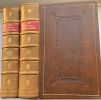
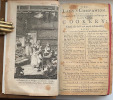

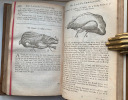
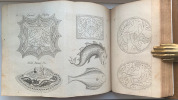

|
|

Antiquarian category
ref number:
11309
|




